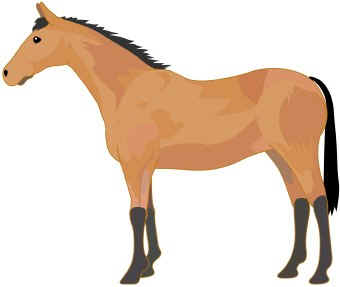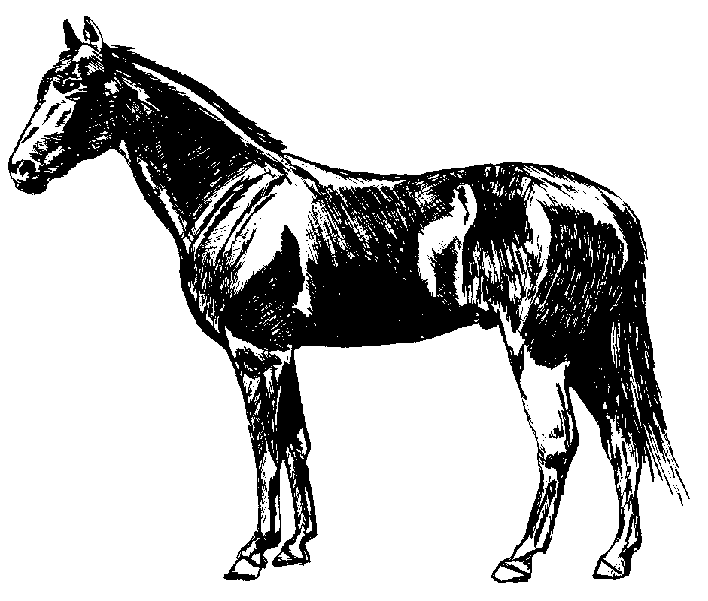Where do I start?
let the horse tell
you
The handiest technique I share with folks during an Equine Positional Release
appointment is how to release portions of the hoof.
This is a really quick and positive thing you can do for
your horse as your cleaning out its feet. Because
it's working with a semi-solid structure, you can do it
daily if you want and you won't be overdoing it. (Not
for the horse, anyway, you might get fed up with it!
But the horse's system would be okay.)
So the main question usually is, 'Which foot do I
start with?'
The horse will tell you.
The foot on the ground is the 'good' foot
I remember asking about this in class and the teacher
was like, 'well, you just know, don't you?'
And I was like, 'no, you don't, do you?
otherwise I wouldn't be asking!'
But a moment (or two or three or a year or so
depending) eventually an answer does percolate through, and
you're very much the wiser for having figured it out
yourself.
Meanwhile, back at the ranch, what's happening to
your horse?
So, here's the thinking:
the horse has a 'good foot' and a 'bad foot.'
which foot is the horse going to stand on?
will the horse opt for pain or for comfort?
(which do you opt for?)
following this further, will the horse stand on the
painful foot? (or the painful leg?)
if it has two bad feet, which foot will it stand
on? etc. etc.
As you are now thinking, this is totally obvious: the
horse stands on the good foot, or the better foot, because
it hurts less.
(So which foot to work with?)
Basically, the foot in the air is the one to work
with. Or if one isn't actually off the ground, the
one with less weight. Which one is that? The
one the horse will let you have.
What if the horse won't let you have the foot?
That's because the horse is standing on it. That's
the foot with the weight. The one that's comfortable
enough to work for the horse.
If the horse has a foot that is 'nailed to the
ground' that's maybe the one good foot the horse has and it
for sure isn't taking it off the ground! Do not start
with that foot.
The shortcut to all of this: the foot that works is
the foot doing the job
When the horse walks up, if it doesn't stand square,
it is putting weight on feet that work better and taking
weight off feet that work less better. (Why?
Because the feet that work better don't hurt as much when
you put weight on them, so those on the ones that do the
work of carrying the horse's weight.)
If you're like a lot of folks, you were taught to
teach your horse to stand square. The thing is, how
the horse stands is telling you how aligned it is. If
it doesn't automatically stand square, it's not
aligned. And how it deviates from square tells you
how it's not aligned. Teaching it, or making it, to
stand square, erases the message the horse would've given
you about how aligned it is.
If it's not aligned, something is less well. It
could be feet, it could be the back, it could be anything,
to be honest, but since we're looking at feet, the take
away here is that how the horse is standing can tell you
about its feet.
Rather than make the horse stand square, let it stand
the way it is comfortable standing and it will tell you
which foot/leg is comfortable, and which is not.
The leg that's under the horse is the one that works
better and the foot that's either in the air or not 'under'
the horse is the one that works less well.
When you go to pick up a foot, pick up the one that's
already off the ground. Get it to feeling
better. Then when you ask the horse to put weight on
it, it won't feel so bad. The other one won't be so
nailed to the ground. If it's truly nailed to the
ground, consider that you're asking the horse to move into
a dangerous place -- ie falling over, and part of the
resistance is the preservation instinct kicking in.
Example
Again, pulling a pic from the internet, here's a
horse standing on two legs. It has a preference for
those two legs -- those are the two 'good'
legs. The other two legs are not carrying as much
weight -- and you might correctly infer that the less
weight they are carrying the more 'owie' they are.
The legs the horse is standing on are the left fore and the
right hind. The leg with the least amount of weight
is the left hind. I would start with it.

Another pic pulled from the internet with the horse
standing on two legs. The legs the horse is standing on
are the left fore and the right hind. I'm guessing
(making this up) this horse is 'caught at an odd moment,'
though. It looks like it had been walking and
stopped. For this horse I would ask it to take one more
step and become clearer about where it wants to put its
weight. The left hind might be the easiest to get off
the ground. OR, it may be that the left fore is the easiest.
IF it's the left fore, you can *ask* the horse for the foot
and if it adjusts the weight by squaring up the hind feet or
moving the left hind back and gives you the foot, then you've
got the correct foot. If the horse puts more weight into
the left fore, then that's the 'one good foot' and it needs to
stay on the ground. In that case, ask the horse to move
forward a little bit and maybe start with the right
fore. If both front feet work then the horse at least
has two feet helping it out then working with a back foot will
be a lot easier. Get one one of the back feet helping
out and now you've got three feet doing their job.
(total side note, if this were the preferred stance of this
horse, I would be doing a psoas release on the left side ...
very easy to do, another of the releases I like to share with
owners!)

If you're interested in learning any of this, teaching folks how
to release the foot is part of all of my Equine Positional
Release horse sessions (EPR is for people, too!) and part of
my half day biomechanics clinics. I
also have been getting a booth at the Bluebonnet Equine Expo
so you can find me there. Stop by and say 'Hi!'
L
|




![Centered Riding Today: An Informal Talk by Sally Swift [VHS]](http://ecx.images-amazon.com/images/I/41Vn6PfhzML._SL125_.jpg)
![Centered Riding with Sally Swift [VHS]](http://ecx.images-amazon.com/images/I/51OSh9kd9iL._SL125_.jpg)





